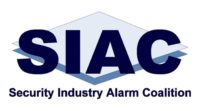A San Jose, Calif. Police Department policy change, on a questionably fast track by police officials still sending out mixed signals to local alarm companies, ended in the institution of verified alarm response the first of this year.
That decision by Chief Chris Moore is not the end point, however, for security and monitoring firms in the area. What these security companies are doing in their own response can help others elsewhere facing potentially similar threats to their businesses. Additionally, the San Jose situation shows that politics, economics, city staff changes, personalities, and a measured response to no response all play differently depending on myriad factors and locales.
Everyone involved in the San Jose situation seems to be caught in the middle in some way or another.
But, in a joint interview following a February 1 meeting of nearly 80 area security executives and law enforcement officials, Julie Buller of Silicon Valley Alarm and Jon Sargent, with ADT Security Services and regional industry/law enforcement liaison for the Security Industry Alarm Coalition (SIAC), believe the real losers trapped in the middle are residents and businesses.
It is, they say, a public safety issue in the short term, because of confusion about what the verified alarm response protocol means as it plays out among stakeholders — homeowners, businesses, security firms, alarm monitoring companies, 911 dispatchers, police, and elected city officials. And it could be a longer term, deeper public safety issue. Homeowners and businesses may not afford or want private patrols or additional technology to first verify an alarm according to the San Jose protocol. “We don’t want to be a Dallas,” said Sargent, referring to citizens there having to respond to their own alarms.
There also is the concern that certain types of crime will rise with the verified response protocol, as has been the case in some other cities. “The police say that crime fluctuates anyway, but…” Sargent trailed off.
These and other points are among the strategies underway by San Jose security firms.
Right now, Buller said, San Jose citizens and businesses don’t know where they stand and what the impact will be on crime and alarm services. “In fact, we don’t know either.” And neither, she contends, do the police and city dispatchers. “They have an internal issue” during the transition, said Buller, who is pushing city officials to provide her the city’s 911 call-taker procedures in writing. “[911 dispatchers] are confused as to what they will do. But we are calling in all our alarms.” And some city call-takers are gathering information to determine if it meets the new policy, while others are not.
Sargent adds that security businesses will continue to make their case. A statement out of Chief Moore’s office announcing the verified response protocol keeps the door a crack open, promising that “this practice will remain under continuous review and will be modified as necessary to provide our residents with the best possible service while allowing for the optimal allocation of police resources.”
Buller rightly points out that it “is a policy (what the chief calls a ‘protocol’) not an ordinance,” suggesting that policies can change often more easily than voted-on ordinances.
While the dust settles or stirs up in San Jose — California’s third-largest city with nearly one million in population — here are some take-aways:
Consider the domino effect of a local change of face. Chief Moore was appointed in early 2011. A new face often looks at things differently or in different ways. And a new face often wants to look, frankly, just different than a predecessor.
Work your message early and constantly. Back in April 2011, Sargent and others from SIAC presented before San Jose police and city staff to talk about the security industry’s best practices and best ways to reduce false alarms. “They pulled out a blue binder about four other cities: Oakland, Santa Clara, Los Angeles and San Diego,” Sargent described. Oakland, for example, has an ordinance that requires people to obtain permits for their burglar alarm system and fees for alarm registration violations and services provided. The ordinance requires alarm companies to play a greater role in how customers use and maintain their alarm systems as well as additional steps monitoring firms take to verify the likely validity of an alarm with the client. But it’s not verified response of San Jose’s type. “Oakland looks like it had good results” in false alarm reduction, Sargent added.
City budget deficits and layoffs, the reddest of flags, complicate matters, accelerate policy changes and minimize the need for compromise. In San Jose, such bad news started gaining steam about the time security businesses were working with city officials in the spring. The police department was not untouched. In December, trying to head off more layoffs of police officers, San Jose’s police union agreed to continue a 10 percent pay cut. It was about the same time that city officials more firmly locked into the chief’s verified alarm response protocol.
Cost recovery of false alarms through permits and fines may not be enough in some circumstances. While the shortfall between what the San Jose police contend was the cost of responding to false alarms and what could be gained by applying a best practices ordinance suggested by SIAC could have narrowed or closed the gap, situational politics may have pulled the chief to a perceived simpler and more “tough” decision. “They seem not interested in cost recovery,” Sargent said.
Who you talk with makes a difference or gives a sign. Buller and Sargent both suggest that police and city officials seemed at first to be attuned to reasonable solutions. Then, the financial challenges the city faced led to a certain lack of focus by officials talking or meeting with their security colleagues and a feeling that those officials may not have had the ability to truly influence the top decision-makers. Not surprisingly, police representatives attending the February 1 meeting did not include the chief or the deputy chief and had to “go to another commitment” before the SIAC presentation.
Make lemonade. For some existing and potential clients, upgrading their security system may be attractive. California Security Pro, on its website, spotlights the San Jose situation, then discusses how “one of the most cost effective ways to verify an alarm event that meets the San Jose Police Department’s verified response protocol is to have an ADT two-way voice audio verification system installed.” And, if someone Googles the phrase “San Jose verified response,” among the items that pop up is one on the Sonitrol of Silicon Valley service, explaining its verified approach.
History repeats itself. Back in 1994, a Santa Clara County Grand Jury investigated false burglar alarms in the county’s cities, including San Jose. It found that “fines and penalty assessments in the City of San Jose were exorbitant and inconsistently applied.” Of the 10 cities it examined, only San Jose defined false alarms at that time as “criminal” and not civil offenses, with the jury labeling such a stance as “inappropriate.” At that time, changes were made, according to a news report in SDM.
Editor’s Note: To read more on this topic, type in keywords San Jose in the search box on the website.





